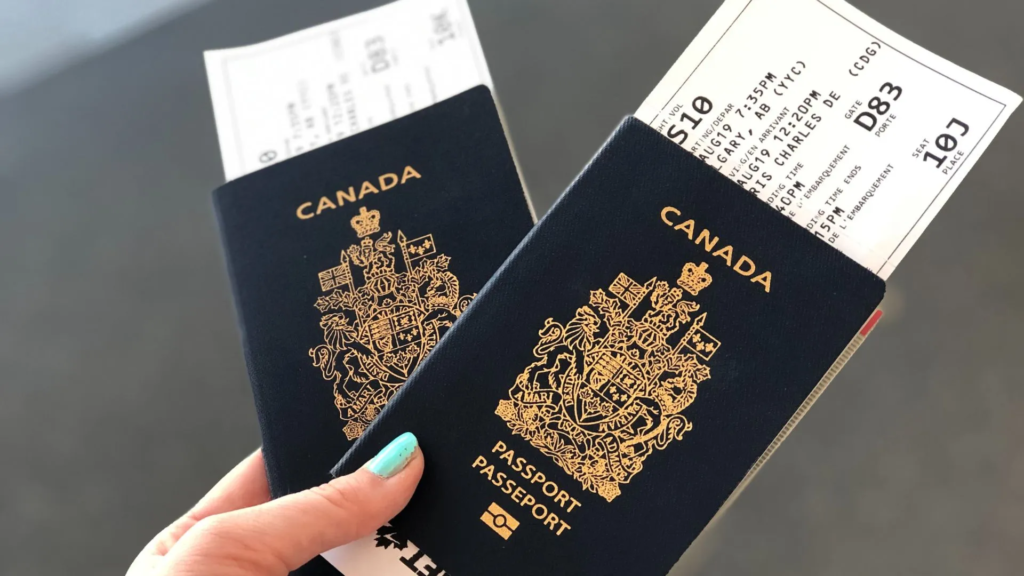Canada has long been seen as one of the most welcoming countries for immigrants and tourists alike. However, in recent months, the country has been shifting its immigration policies to address growing concerns around housing shortages, social infrastructure strain, and shifting public sentiment on immigration.
One major recent policy change has been the end of Canada’s automatic issuance of 10-year multiple-entry tourist visas, which previously allowed travelers to visit Canada multiple times over a decade without needing a new visa each time.
Adjusted Visa Policy: New Rules for Canadian Tourist Visas
Until recently, travelers applying for a tourist visa to Canada could be granted a multiple-entry visa valid for up to 10 years. This long-term visa allowed tourists to enter and exit Canada as many times as they wished over the period, offering convenience for regular visitors.
However, the Canadian immigration department recently introduced changes, removing the automatic issuance of 10-year visas and instead allowing immigration officers more discretion in determining both the validity period and the entry type.
Under the new guidelines, immigration officers may now issue either single-entry or multiple-entry visas, with the length of validity determined based on factors such as the visitor’s purpose, occupation, financial stability, and health.
This shift signals a new approach for Canadian immigration, giving officials the authority to assess applicants’ situations more closely before determining the visa type and its length of validity.
Read : Canada PM Trudeau Will Be Gone in Upcoming Election: Elon Musk
Factors like ties to the applicant’s home country and their history of compliance with past travel visas may also influence decisions, as Canada works to ensure that only travelers with legitimate purposes enter the country under its more lenient multiple-entry provisions.
Read : Canada Lists Iran’s Islamic Revolutionary Guard Corps (IRGC) as a Terrorist Organisation
Previously, a multiple-entry visa allowed travelers flexibility and peace of mind when planning multiple visits to Canada, as they did not need to reapply frequently. But with the shift in immigration policy, Canada’s immigration department has clarified that while multiple-entry visas will still exist, they will not be the standard document issued automatically for every traveler.
Addressing Housing and Economic Concerns
Canada’s shift away from automatic long-term visas comes amid rising concerns over the country’s strained housing market, overburdened social services, and changing economic conditions. In recent years, Canada has seen an unprecedented surge in its population due to high levels of immigration, particularly from temporary workers, international students, and tourists.
This wave of newcomers has led to a significant demand for housing, contributing to an already challenging housing market with soaring prices and limited availability.
Canada’s Immigration Minister Marc Miller recently acknowledged that the influx of people has intensified the housing crisis, noting that the surge in migration should have been better managed earlier on. Rising rental prices and increased property values have made it difficult for many Canadians to find affordable housing.
According to recent polls, a growing number of Canadians are concerned about immigration levels, believing the current volume has outpaced the country’s ability to absorb and accommodate newcomers effectively.

The visa policy shift is part of a broader move by Prime Minister Justin Trudeau’s government to reduce the influx of temporary and permanent immigrants, marking a policy reversal for an administration that had previously championed immigration as a tool for economic growth.
To address the housing shortage, the government announced that a cut in immigration could help close the housing supply gap, potentially reducing it by 670,000 units by the end of 2027. These measures are also intended to address public sentiment, as housing shortages and rising living costs have become pressing political issues ahead of Canada’s upcoming federal elections.
Implications for Immigration and Tourism in Canada
This policy change has far-reaching implications for Canada’s immigration landscape and tourism sector. The new, stricter guidelines suggest that Canada is not only limiting the length of visas but also taking a more rigorous approach to who is allowed entry in the first place.
Minister Miller stated that he instructed immigration officers to take a stricter stance in processing visas, underscoring the importance of controlling entry numbers to relieve pressure on social infrastructure. This is a significant shift in tone for Canada, traditionally seen as a “land of opportunity” with open doors.
From an economic standpoint, reducing tourist entries and limiting immigration may have consequences for industries dependent on a steady influx of international visitors and labor, such as tourism, hospitality, and service sectors.
While the policy shift may alleviate some social pressures, industry groups worry that reducing immigration and tourism could shrink the labor market and slow economic growth.
Furthermore, Canada’s decision to tighten immigration policies could impact its global reputation as a welcoming destination, potentially dissuading visitors and international students who would have contributed to local economies.

For prospective travelers, the new rules may create additional uncertainty, as travelers may need to provide more documentation and prove stronger ties to their home country before being granted a visa. The Canadian government has not entirely closed the door to long-term tourism, but it has introduced conditions that require applicants to meet higher standards of accountability and purpose.
In the coming years, Canada’s immigration policies will likely continue to evolve as the government balances its open-door ethos with domestic pressures.
Adjustments to the visa issuance process, combined with planned caps on the number of international students and temporary workers, signal a more conservative stance toward immigration and temporary residence, aiming to protect housing and social services without entirely shutting off avenues for skilled immigration or tourism.
let’s enjoy few years on earth with peace and happiness….✍🏼🙏

